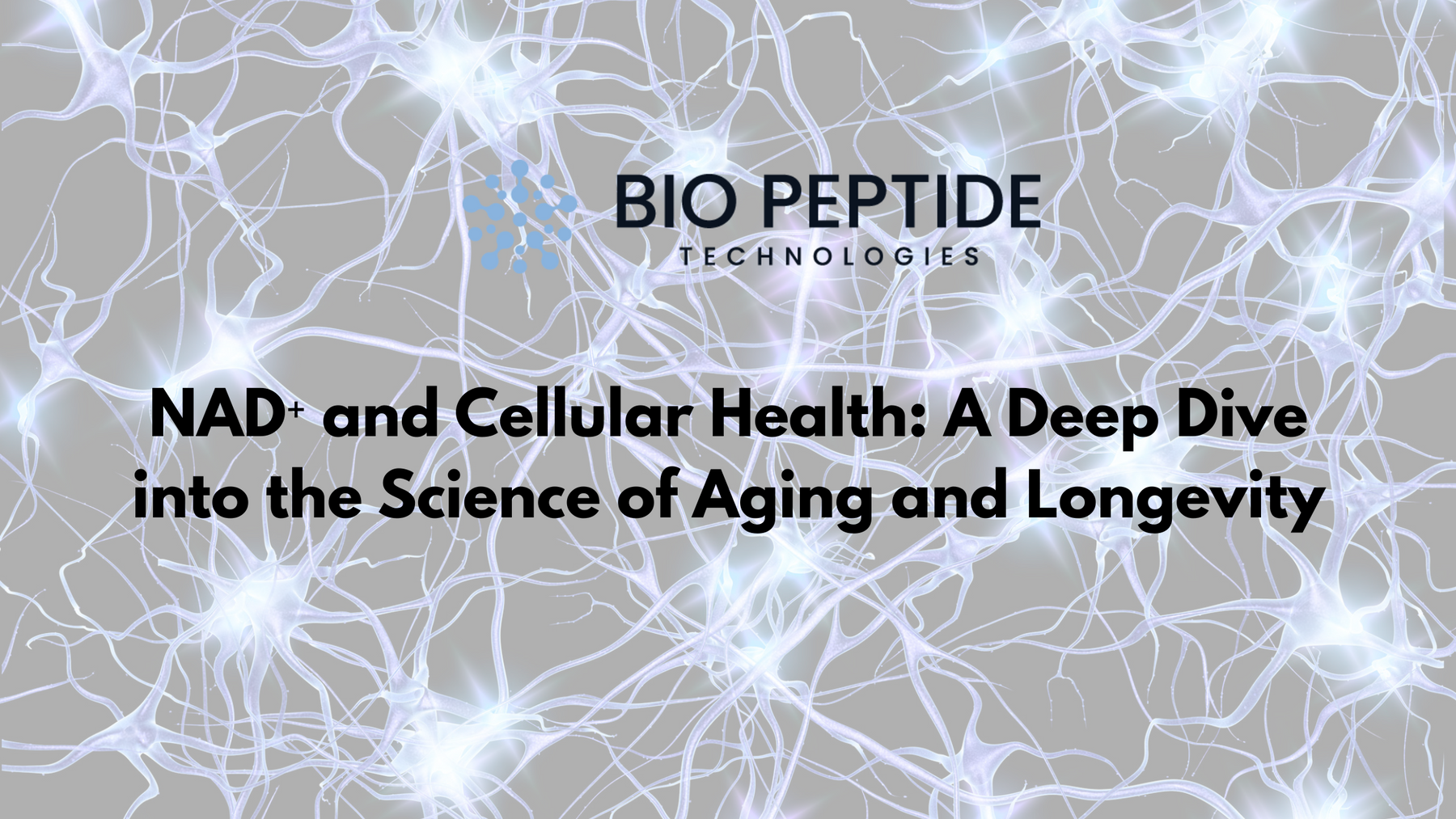
NAD⁺ and Cellular Health: A Deep Dive into the Science of Aging and Longevity
Introduction
Nicotinamide adenine dinucleotide (NAD⁺) is a pivotal coenzyme found in all living cells, playing a crucial role in numerous metabolic processes. Its significance extends beyond energy metabolism, influencing DNA repair, gene expression, and cellular aging. As research delves deeper into the molecular mechanisms of aging, NAD⁺ has emerged as a central player, offering potential avenues for therapeutic interventions aimed at promoting longevity and combating age-related diseases.
The Multifaceted Role of NAD⁺ in Cellular Physiology
NAD⁺ serves as a coenzyme in redox reactions, facilitating the transfer of electrons in metabolic pathways such as glycolysis, the tricarboxylic acid (TCA) cycle, and oxidative phosphorylation. Beyond its role in energy production, NAD⁺ is a substrate for several enzymes that regulate critical cellular functions:
- Sirtuins: These NAD⁺-dependent deacetylases modulate gene expression, DNA repair, and mitochondrial function, thereby influencing aging and metabolic health.
- Poly(ADP-ribose) polymerases (PARPs): Involved in DNA repair processes, PARPs consume NAD⁺ to add ADP-ribose units to target proteins, signaling for DNA damage repair mechanisms.
- CD38: This enzyme degrades NAD⁺ and regulates calcium signaling, with implications in immune responses and metabolic regulation.
The consumption of NAD⁺ by these enzymes underscores its importance in maintaining cellular homeostasis and responding to physiological stressors.NAD⁺ and Cellular Health: A Deep Dive into the Science of Aging and Longevity
Age-Related Decline in NAD⁺ Levels
Aging is associated with a progressive decline in NAD⁺ levels across various tissues, contributing to the deterioration of cellular function and increased susceptibility to age-related diseases. Several factors contribute to this decline:
- Decreased biosynthesis: The activity of nicotinamide phosphoribosyltransferase (NAMPT), a key enzyme in the NAD⁺ salvage pathway, diminishes with age, reducing NAD⁺ production.
- Increased consumption: Enhanced activity of NAD⁺-consuming enzymes like PARPs and CD38 in response to accumulated DNA damage and inflammation accelerates NAD⁺ depletion.
- Chronic inflammation: Age-related chronic inflammation, or “inflammaging,” upregulates CD38 expression, further exacerbating NAD⁺ loss.
This decline in NAD⁺ impairs mitochondrial function, reduces DNA repair capacity, and disrupts metabolic homeostasis, collectively contributing to the aging phenotype.
Therapeutic Potential of NAD⁺ Replenishment
Given the central role of NAD⁺ in cellular health, strategies to restore its levels have garnered significant interest. Supplementation with NAD⁺ precursors has shown promise in preclinical and clinical studies:
- Nicotinamide riboside (NR) and nicotinamide mononucleotide (NMN): These precursors effectively elevate NAD⁺ levels, enhancing mitochondrial function, improving insulin sensitivity, and promoting neuroprotection in animal models.
- Clinical trials: Human studies have demonstrated that NR and NMN supplementation is safe and can increase NAD⁺ levels, with potential benefits in metabolic health and aging-related conditions.
However, the long-term efficacy and safety of NAD⁺ supplementation require further investigation through large-scale, randomized controlled trials.
Conclusion
NAD⁺ is integral to maintaining cellular function and resilience against age-related decline. Understanding the mechanisms underlying its depletion with age has opened new avenues for interventions aimed at promoting healthy aging. While NAD⁺ replenishment strategies hold promise, ongoing research is essential to fully elucidate their therapeutic potential and to develop effective, evidence-based approaches for enhancing human healthspan.

Leave a comment